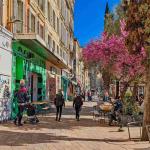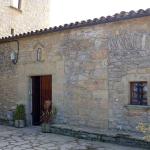Thessaloniki gets ready for its metro launch in November
The underground rapid transit lines have been under construction for almost two decades due to various project delays
 TheMayor.EU logo
TheMayor.EU logo 
The underground rapid transit lines have been under construction for almost two decades due to various project delays

The cross pinnacle on the Tower of Jesus Christ will be ready to receive visitors in 2026 on the centennial of Gaudi’s death

Now you can get your wine in Talence by paying directly in Bitcoin

That’s because the state has to spend money on updating the railway infrastructure rather than subsidizing the cost of the popular pass

Steffen Romstöck said that he would respect the residents’ choice and would take over the helm of the municipality, even if he didn’t run

The measure, which will come into force from 1 January 2025, will be partial and temporary…for now

Rethinking renewable energy sources for the urban landscape

But operating them is still illegal under the country’s legislation

The examples, compiled by Beyond Fossil Fuels, can inform and inspire communities and entrepreneurs that still feel trepidation at the prospect of energy transition

Now you can get your wine in Talence by paying directly in Bitcoin

Rethinking renewable energy sources for the urban landscape

The examples, compiled by Beyond Fossil Fuels, can inform and inspire communities and entrepreneurs that still feel trepidation at the prospect of energy transition

The underground rapid transit lines have been under construction for almost two decades due to various project delays

Plus, it has a unique modular design that allows it to be shortened and lengthened like a train

At least, that’s the promise made by the mayor of Paris, Anne Hidalgo

Despite its church-y name, the district has long been known as the hangout spot for the artsy crowds

At least, that’s the promise made by the mayor of Paris, Anne Hidalgo

Hostal de Pinós is located in the geographical centre of the autonomous region

On the eve of the new academic year, the ranking considers several distinct but essential factors


Following a successful trial phase, these quiet areas will now be available on all main routes in the country

The academic institution shows a deeper understanding of the well-being of its students











Kutina has great historical and natural heritage dating back to the first documented mention of the municipality in historical records from 1256.
At the end of the 19th and the beginning of the 20th century, Kutina was a district capital in the Bjelovar-Križevci County of the Kingdom of Croatia-Slavonia.
Kutina is the industrial, commercial and administrative centre of the micro-region of Moslavina, which is located in Central Croatia. It has a good geographical location, lying on Pan-European transport corridor X, with motorway and railroad access as well as good road connections to Hungary and Bosnia and Herzegovina.
The municipal population is of around 22 thousand people (2011 census).
Kutina is the industrial centre of the region of Moslavina with a strong presence of the petrochemical industry thanks to Petrokemija d.d., and with a strong showing in the production of electronic components through SELK d.d. The city also boasts a wide variety of smaller entrepreneurship.

The must-visit sites in Kutina are the Lonjsko polje nature park, the baroque fortress church of Saint Mary of the Snow, the old wooden houses called Trijem or Čardak, and the hills of Moslavina with ruins of medieval "burgs".
The Wine roads of Moslavina, where you can taste the region's genuine wine Škrlet make up one of the most treasured parts of the region.